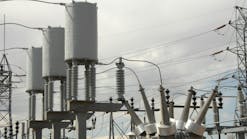Who Says the Era of Long-Haul Billion-Dollar Projects is Behind Us?
Earlier this year, not one but two international projects were announced – both with the goal of moving renewable energy from Canada into the power thirsty northeast with two goals in mind – lower the risk of dependence on volatile priced natural gas and decarbonize the generation fleet to meet state renewable portfolio standards. The two projects are Emera’s Atlantic Link project and National Grid’s Granite State Power Link.
Atlantic Link is 100% owned by publicly traded Emera Inc. with approximately CDN -- $28 billion in assets. The proposed Atlantic Link project involves construction of 350 miles of subsea HVDC cable from the Coleson Cove substation in New Brunswick to a proposed site near the Pilgrim nuclear power plant at Plymouth, Massachusetts. Pilgrim is set to retire in mid-2019. Additional structures include two HVDC converter stations, adjoining substations and onshore anchoring sites. The project is expected online by the end of 2022, at an estimated cost of nearly $2 billion.
Emera is currently constructing the 500 MW Maritime Link – a 110-mile undersea HVDC cable between the Canadian provinces of Newfoundland & Labrador and Nova Scotia. According to Emera, the Maritime project is expected to be completed on time this year and is on budget.
National Grid announced on March 28, 2017, a proposal to build the Granite State Power Link, a new transmission project that would bring up to 1,200 MW of renewable energy from Canada into the New England power grid. The proposed project involves two segments: The first is a new HVDC overhead line located in Vermont near the international border near Norton, Vermont, to a proposed converter station in Monroe, New Hampshire. The second segment involves an upgrade of an existing National Grid power line in New Hampshire and covers 107 miles. The total project involves the development and construction of 170 miles of new line and is estimated to cost near $1 billion.
In December of 2016, National Grid completed sea2shore: The Renewable Link, a project interconnecting the nation’s first offshore wind farm, located off the shore of Rhode Island, to the mainland.
Other Projects in Progress
Other new project announcements include American Electric Power’s subsidiary Southwestern Electric Power Company’s rebuild project Greenland to Van Buren. The project was announced in late March and involves upgrading about 42 miles of 69-kV line in Washington and Crawford counites in Arkansas. The line will run from the Greenland substation to a substation on the north side of Van Buren. Construction is expected to start in the Fall of 2017 and be completed by the end of 2018. Project cost is estimated at $40M.
On April 18, 2017, Xcel Energy announced construction has started on the Hobbs to China Draw Project in southeast New Mexico. The 90-mile segment is part of a larger 240-mile 345-kV project that will link substations in Texas and New Mexico. The Hobbs to China Draw segment is expected to be in service in June of 2018 at an estimated cost of $163M. By 2020, the remaining segments from Hobbs to north of Lubbock will be completed, linking the current project to the TUCO substation in Texas – bringing the total project cost to around $400M. This development is part of Xcel’s subsidiary Southwestern Public Service Company, $1.6bn transmission expansion plan in Texas, New Mexico and Oklahoma called “Power for the Plains”.
On April 7, 2017, American Electric Power’s Indian Michigan Power subsidiary announced they are moving forward on the $42M Jackson Road to Marshall Transmission Line Rebuild Project which is the fifth of six projects in the $170M Power Up Greater South Bend Project. Infrastructure in the area was originally built in the 1920’s and 1930’s. The project involves the replacement of aging wood poles with steel monopole structures. Construction is expected to be completed next year.
On May 10, 2017, Exelon’s Potomac Electric Power Company (PEPCO) filed notice of construction for the first phase of the Capital Grid Project in Washington, DC. The project involves new underground transmission lines, upgrading substations and building a new substation. The Capital Grid Project is the signature investment estimated at $337M of a $720M strategy to upgrade the grid in the D.C. area. PEPCO must receive approval from the Public Service Commission to proceed. The project involves the construction of 10 miles of 230-kV underground circuits, the upgrading of Takoma, Harvard and Champlain substations, as well as a new substation in the Mount Vernon Triangle. According to the project factsheet, the investment will increase resiliency and enable economic development in the area.
On May 8, 2017, Puget Sound Energy released their 550-page Phase 2 draft Environmental Impact Statement (EIS), for the Energize Eastside project which involves the construction of a new substation and upgrades to an existing 18-mile stretch of power lines between Renton and Redmond. The 230-kV project is estimated to cost around $300, with construction starting later this year and be completed in late 2018.
Back on April 26, 2017 Pattern Energy, LP announced its proposed Southern Cross Transmission project had filed a petition for a siting certificate with the Mississippi Public Service Commission. The petition included the designation of a preferred route for the commission consideration. The project is a 400 mile, 500-kV HVDC transmission line with a base capacity of 2,000 MW delivered in either direction – the projects goal is to deliver wind power from Texas to the Southeastern states. It’s estimated to cost about $700M. Pattern Energy CEO Mike Garland stated, “The Southern Cross project will be one of the nation’s first overhead HVDC transmission lines constructed in nearly twenty years and all the capital investment for the project is being provided by private investors.”
In early May 2017 construction of Southern California Edison’s (SCE) landmark 500-kV underground project Mira Loma to Vincent was completed. Burns & McDonnell served as SCE’s engineer for routing the 3.7-mile line which is one of the world’s first 500-kV power lines ever installed underground. The project received ACEC awards for engineering excellence. The project crossed two major highways, several minor roadways, a shopping center, two flood-control channels and two holes of a golf course. In all, the project involved the installation of 17,000 linear feet of duct bank and numerous horizontal drills ranging from 800 to 1,200 feet in length. The project is also known as segment 8 of SCE’s $2.5bn Tehachapi Renewable Transmission Project.
Ending on an interesting note, in early April 2017, the State Grid of China started construction on what will be the world’s highest power transmission line in southwest China’s Tibet region. The $2.35bn project includes the construction and upgrade of sixteen 110-kV substations and transmission lines with a total length of 1,700 miles at an average altitude of 12,303 feet. The largest altitude gap between two towers is estimated at a phenomenal 1,620 feet. The complex grid project is expected to be completed sometime in 2018.


